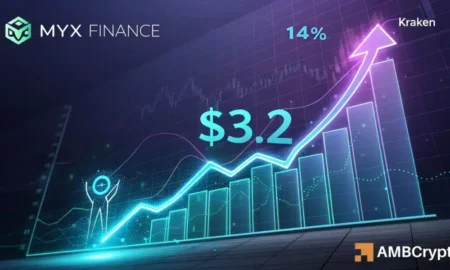China’s Cryptocurrency Conundrum: A 2025 Update on Mining and Market Dynamics
Introduction: The 2021 Ban and Its Implications
In 2021, China took a monumental step by banning cryptocurrency mining and transactions, a move aimed at curbing financial crimes and stabilizing its financial landscape. The People’s Bank of China (PBOC) emphasized the risks associated with unregulated digital assets, which posed threats to economic stability. The sweeping ban signaled a decisive attempt by the Chinese government to regain control over the financial system and protect investors from the volatility and risks that cryptocurrencies embodied.
The Reality of Mining Post-Ban
Despite the stringent regulations and the prohibition of crypto activities, illicit mining persisted under the radar. As of Q4 2025, data revealed that China still contributes a notable 14.05% to Bitcoin’s overall hashrate, estimated at approximately 145 exahashes per second (EH/s). This statistic places China as the third-largest Bitcoin mining hub globally, trailing only the United States and Russia. The irony lies in the fact that while the country’s formal stance remains one of prohibition, the mining ecosystem operates quietly but effectively, primarily in remote regions like Xinjiang, known for its cheap and abundant electricity.
The Role of Xinjiang in Underground Mining
Xinjiang has emerged as a focal point for clandestine mining activities. Its remote geography and access to inexpensive energy make it an attractive location for miners seeking to circumvent regulatory scrutiny. Industry insiders suggest that a significant portion of China’s mining operations is concentrated here, where miners can easily blend into the landscape, making it difficult for authorities to enforce the ban. This strategic advantage allows these operations to contribute meaningfully to Bitcoin’s network, despite the overarching risks of government crackdowns.
Market Trends: Bitcoin’s Resilience
Amidst this backdrop, Bitcoin has shown remarkable resilience. As of recent reports, the cryptocurrency was trading at $111,007.61, reflecting a 1.16% increase in value. This rise signals renewed confidence in Bitcoin’s viability as an investment and has coincided with an uptick in global mining activities. The overall Bitcoin hashrate has surged to 1,137.06 EH/s, underscoring robust participation from miners worldwide, including those in China, who continue to believe in Bitcoin’s long-term profitability.
The Economics of Hashrate
A rising hashrate is often interpreted as a sign of miners’ confidence in their profitability and the network’s overall security. Despite China’s efforts to suppress crypto mining, the persistent participation of miners highlights the complexities involved in controlling this decentralized financial ecosystem. This ongoing activity not only strengthens Bitcoin’s underlying technology but also defies governmental efforts to impose stricter regulations, illustrating a fundamental tension between state control and market dynamics.
Conclusion: The Future of Cryptocurrency in China
As we look towards the future, China’s relationship with cryptocurrencies remains fraught with contradictions. While the government has implemented policies aimed at curbing mining and trading, the reality is that these efforts have only partially succeeded. The presence of underground mining activities and the sustained confidence in Bitcoin reflect a cash-based balance between regulatory intentions and market realities. The developments in Xinjiang and other hidden locales will continue to be a critical factor in the global cryptocurrency landscape, built upon a backdrop of China’s ongoing struggle between regulation and innovation.











![Humanity Protocol [H] Rises 138% Following Integration into Sui Ecosystem](https://icoinmarket.com/wp-content/uploads/2025/10/Gladys-45-1000x600.webp-450x270.webp)




